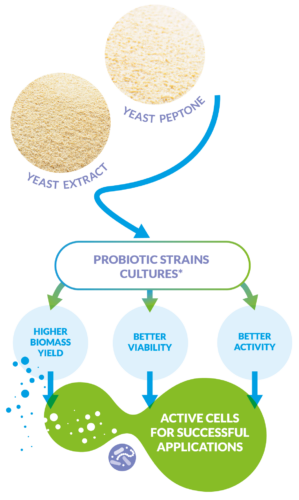Ever heard of probiotics? The World Health Organisation (WHO) defines them as “live microorganisms”—mostly bacteria but also yeasts—“which when administered in adequate amounts confer a health benefit on the host”. The body works in harmony with tens of trillions of microorganisms such as bacteria, viruses, parasites, fungi and other life forms, most of which are found in the human gut. They are collectively referred to as the gut microbiota. But these microbes can also colonise the mouth, the skin, the lungs and the vagina. In fact, the interactions between those microorganisms and our cells are important for our health, especially when it comes to our immune system. However, diseases, treatments as well as lifestyle changes can sometimes disrupt the balance between the gut microbiota and the host (our body). This is where the probiotics come in. When ingested (or applied to the skin) in sufficient quantities, they are able to restore that balance and so improve our health and/or quality of life.
Probiotics can, for instance, improve our gut health by reducing antibiotic-associated diarrhoea or intestinal disorders caused by chronic inflammatory bowel diseases (IBD) like Crohn’s. They can also help to alleviate common respiratory tract infections and skin diseases, e.g. severe forms of acne, and are effective in treating vaginal yeast infections (thrush). Some studies even show that taking probiotics might help with symptoms of mood disorders and mental health conditions like depression. Aware of the many (proven or potential) benefits probiotics can offer, the market for these products has boomed over the last twenty years and is currently estimated at an annual value of more than USD 50 billion. However, the effectiveness and quality of off-the-shelf probiotics do not always live up to consumer expectations.
Probiotics need to be alive when they reach the target area and physiologically active in order to provide health benefits. And these two factors are key: the viability and vitality of probiotics depend directly on the production, drying, packaging and storing conditions, but also on whether they are ingested (in the form of foods or probiotic capsules) or applied to the skin (creams). First of all, each probiotic strain needs its own food source in order to multiply. The culture medium where probiotics will be fermented must contain all the nutrients required for growth, in particular sources of carbon and nitrogen. The pH, the temperature and the aeration of the culture medium in which probiotics multiply are also essential parameters to improve the growth of these microorganisms during production, but also their viability after fermentation. Once the production phase is complete, live probiotics are separated from the growth medium by centrifugation or filtration and then freeze-dried at very low temperature. While freeze-drying (lyophilization) can stop cell activity to extend the shelf-life of probiotics, it can also damage their cell membranes. In order to ensure that cells survive and go on to become active again, nutritious compounds, such as sugars, are added to the freeze-dried powder. The powder obtained can also be mixed with vitamins and minerals, other probiotics or prebiotics, which are nutrients that probiotics feed on. Once the formulation process is complete, the probiotics are packaged (into capsules, tablets, sachets, or powder form ) and stored away from light and moisture.
But the manufacturing process is particularly challenging for the microorganisms. In addition to the stress conditions encountered throughout the manufacturing stages, the probiotics that are ingested have to survive passage through the gastrointestinal tract on their way to the gut and need to be physiologically active. This is where Procelys by Lesaffre’s long-standing expertise can make all the difference. A pioneer and one of the global leaders in yeast-based fermentation nutrients, Procelys by Lesaffre has developed the NuCel® range to address the needs of the food-processing industry in general but also those of probiotic manufacturers. Procelys by Lesaffre has used experimental models that simulate the stresses encountered by probiotics in the stomach to show the benefits of its range of products, in particular yeast peptones, and how they can affect the survival and activity of probiotics, both after fermentation and as they pass through stomach acid. The nutrients that probiotics feed on during production will affect their viability and vitality throughout the entire manufacturing process and beyond. More than just a raw material supplier, Procelys by Lesaffre also shares its know-how in fermentation with probiotic manufacturers so they can optimise all aspects of the manufacturing process. This is what makes Procelys by Lesaffre a partner of choice in the ever-growing probiotics market.



